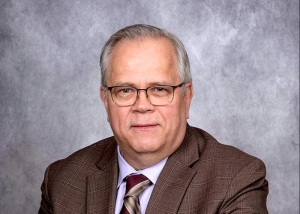Exit Planning:
Patching Holes in Business-Continuity Plans
For many owners, business-continuity planning is comprised of creating a buy-sell agreement early in the company’s existence and filing it away. Unfortunately, on their own, buy-sell agreements are generally too simplistic to handle the complexities of exiting a business in style (i.e., selling the business when you want, for the amount you want, and to whom you want).
Nonetheless, most business owners use buy-sell agreements as their sole business-continuity plan. Weak continuity plans are like quicksand: Though they look like they provide reliable footing for a smooth exit, they often end up sinking the owner’s company when it is time to exit, whether voluntarily or involuntarily. As a business owner, how can you avoid falling into the false comfort of an inadequate continuity plan and assure that you can exit your business on your own terms?
Here we discuss common holes present in both business-continuity plans (Holes 1 and 2) and buy-sell agreements (Holes 3–7) and provide you with ways to patch those holes. The seven most common holes are as follows:
- Business-continuity plans overlook challenges to the business.
- Neglecting the decedent’s family.
- Buy-sells that are too simplistic.
- Ignoring common lifetime exits.
- Using cookie-cutter valuation formulas.
- Outdated buy-sells.
- Poorly implemented buy-sells.
Addressing and patching these holes will help you, your family, and your company adjust and adapt to both planned and unplanned exits, making it more likely for you to exit your business in style. Let’s begin by patching the first hole: overlooking challenges to the business.
Hole 1: Business-Continuity Plans Overlooks Challenges to the Business
Recall that most business owners’ continuity plans consist solely of a buy-sell agreement. The most common problem with many of these plans is that they don’t include provisions to address the challenges that the business will face upon the owner’s death; they simply give instructions for how and to whom the business should be sold. When owners die, the party to whom the business is transferred tends to run into two problems that the continuity plan does not address: the loss of financial capital and the loss of talent. Let’s look at how the loss of financial capital can be a business-continuity hole that needs to be patched.
Loss of Financial Capital
Sue Ellen Saint-Saens, one of BEI’s Exit Planning Advisors, first met Joel Canfield soon after Frank Sobel, Joel’s 51% co-owner, died.
Joel told her that, as a key employee, he had purchased 49% of Sobel Construction Inc. (SCI) over several years. He was president and ran the business, allowing Frank to retire. Sue Ellen learned that SCI undertook one or two large construction projects each year—projects that required a performance bond and a line of credit.
As founder and majority owner, Frank had personally guaranteed the performance bonds, and his personal assets served as collateral for the line of credit. After Frank’s death, Joel was willing to provide his personal guarantee, but with his nominal personal assets, he couldn’t satisfy the bank’s outside collateral and guaranty requirements. Without bank financing, SCI could not continue to do business.
Neither lifetime transfers nor transfers upon death provide the departing owner or his or her estate with financial security if the succeeding owner is an unacceptable substitute to lenders, nor will ownership transfers under these conditions allow the successor to continue the business.
In this example, Frank and Joel only covered part of the business-continuity problem: SCI’s buy-sell agreement stated that the company would be transferred to Joel upon Frank’s death. Additionally, Frank’s insurance advisor had purchased enough insurance for the transfer to occur smoothly, which allowed Joel to pay Frank’s estate for the remaining 51% of the company. However, their continuity plan failed to consider the matter of available financial capital.
Frank had personally guaranteed the performance bonds and had enough assets himself to serve as collateral. Joel, on the other hand, did not have enough assets to satisfy lenders, nor did his personal guarantees hold the weight that Frank’s did. As a result, SCI was forced to shut its doors.
Without access to capital, many companies cannot continue to function. As a responsible owner, how can you overcome the false security of an inadequate continuity plan?
- Inform your Exit Planning Advisor about any personal guarantees and collateral that exist in your business.
- Do not, under any circumstances, give up control of the business without receiving (a) full payment and (b) full release from any existing and contingent debt or obligations for the business.
- Get written assurance from your lender that states that with the adequate amount of life insurance (or a specific amount of replacement capital provided by the successor), the lender will forego the need for your personal guarantee or collateral.
- If adequate life insurance is unavailable (due to age, illness, or otherwise), revise your plan to stipulate that you will not transfer ownership until your successor can provide personal guarantees/collateral acceptable to the lender.
Your Exit Planning Advisor will know the importance of preventing contingent business liabilities from following you out the door, and your Advisor will also know that your current continuity plan likely does not address how the business will continue without you. Knowing this yourself will protect you from building your exit on the quicksand of an inadequate continuity plan.
Next, we will look at how to handle a loss of talent, in this case, if it were Joel who died before Frank
Loss of Talent
A loss of talent, whether by death, disability, or departure, can be a massive hurdle for owners with inadequate buy-sell agreements. In most closely held businesses, one owner typically serves as the company’s rainmaker or relationship developer, without whom the business cannot survive. In the case of SCI, Joel was the company’s rainmaker. What would happen if Joel were to die?
As we’ve seen, Frank and Joel—like many business owners—had a buy-sell agreement that addressed to whom and how the business would be transferred upon an owner’s exit, but it failed to determine how to assure that the business would survive following one of the owners’ exits. Thus, upon Joel’s unexpected death, SCI no longer had the one person who could assure that the business’ cash flow and value would continue to grow. Without its primary rainmaker, SCI was unsellable because it had no transferable value.
Transferable value is a key component to a successful sale. It is what allows an owner to exit his or her company with the necessary amount of money for financial independence and allows the company to continue without him or her. Thus, having capable replacements should an owner die or exit unexpectedly is paramount. Ideally, owners will not die before their Exit Plans are executed, but there are ways to prepare for such a situation:
- Identify risks. Ask yourself, “If my co-owner or I were to die tomorrow, how will the company replace us adequately?” Your answers will allow your Exit Planning Advisor to craft solutions to this problem. Most likely, the answer will be that you need to either recruit new management or train and groom existing management or key employees to take the reins should you or a co-owner die unexpectedly.
- Create a replacement plan. When a rainmaker exits the business unexpectedly, the company must immediately replace him or her with someone equally or more skilled. In Frank’s case, he did not have anyone readily available to step into Joel’s role, so he had to look outside the company. Unfortunately, most rainmakers were hesitant to leave their current jobs, primarily because they were content in their current positions and were well compensated. Thus, when creating a replacement plan, you must be able to entice other rainmakers to come to you. A few methods to do this include selling the rainmakers on your company’s strong reputation, providing a challenging position with a path to ownership, or, most effectively, offering compensation that is significantly higher than what he or she is currently paid. The easiest way to provide such compensation is by purchasing appropriate life insurance on your rainmaker’s life and on the lives of all other key employees. That way, if any of those people were to die, you would have the funds to replace them almost immediately.
The common thread between these two solutions is time. It can take years to identify all of your risks, build your company’s reputation, provide a worthwhile work experience for outside rainmakers, or train current management to pick up the slack should a rainmaker or key employee exit unexpectedly. Thus, if you plan to exit your business within the next 5–10 years, you need to begin patching this hole in your continuity plan today. In the short term, rapidly replacing your rainmaker with another of equal or greater talent may be the difference between the life or liquidation of a company. Funds from life insurance (assuming the rainmaker is insurable) enable companies to hire the best available replacements. Life insurance can also provide the funds necessary to maintain a business until the new rainmaker is able to fill the hole in the business’ operations.
Hole 2: Neglecting the Decendent’s Family
One aspect that is often overlooked in continuity plans is the financial security of the owner’s family following the owner’s premature death. Since most continuity plans only concern to whom the business should be transferred upon an owner’s untimely death, they ultimately fail to fulfill the owner’s goal of financial security for his or her family. Consider the following example:
Bob and Dan were equal co-owners of Bob & Dan’s Construction, a relatively new business worth, according to a recent appraisal, $5 million. Bob and Dan each received annual salaries of $375,000. The business’ EBITDA had grown to $1 million, most of which the owners left in the business to fund its healthy growth.
One day, Bob was killed in a hit-and-run accident. His estate received $2.5 million (the full value of his ownership interest) from an insurance policy that Dan had on Bob’s life. Their buy-sell agreement worked exactly as written but possibly not as the two owners had intended. The result was disastrous for Bob’s family.
Before Bob’s death, he, his wife, and three children lived on his salary. After Bob’s death, his family’s principal asset was the $2.5 million from insurance. Bob’s widow’s financial planner suggested that a reasonable withdrawal rate from the insurance proceeds would be 4%, or $100,000 per year. Even though Bob’s estate received the full value of his interest in the business, his family’s annual income plummeted from $375,000 to $100,000.
This example shows the unintended consequences of most continuity plans. While Bob and Dan took the right step in purchasing life insurance, the amount that Dan took out could not support Bob’s family as Bob’s original salary had. On top of that, Bob’s family lost Bob’s share of EBITDA, which was another $500,000 loss.
How can you assure that your family will be financially secure if you die before your targeted exit date? The most obvious patch is to buy life insurance on yourself owned outside of the business. However, this method is often prohibitively expensive. Consider, for instance, the above mentioned example. In order for Bob to have insurance coverage that would allow his family to recoup all losses (salary and EBITDA), he would need an additional $12 million in insurance coverage. Since owners who are considering Exit Planning are generally older, this amount of insurance is often impossible to obtain.
When insurance coverage cannot cover losses, you can consider one of the following methods:
- Eliminate the requirement for a full purchase of the decedent’s ownership interest. Consider a transfer of control to the surviving owner in which he or she acquires the remaining ownership over time using a purchase price set by the buy-sell agreement. This arrangement would have allowed Bob’s family to continue to receive S distributions.
- Provide income continuation for a set number of years via a wage-continuation plan after an owner’s death. In our case study, the company could have been obligated to pay Bob’s family $150,000 per year for 10–15 years.
- Consider reducing the purchase price and making up the net shortfall with wage continuation (if life insurance is unavailable). The company’s cash flow is better used to pay deductible wages than to purchase ownership with after-tax dollars. While wage-continuation income is taxable to the decedent’s estate, the estate is likely in a lower tax bracket than the surviving owner of the S corporation.
While each of these patches can fix the hole in your business-continuity plan, none of them are ideal. In order to truly patch this hole, you will need to do the following:
- Include your spouse in initial planning meetings so that he or she understands the effects that your untimely death or incapacitation will have on him or her.
- Review your lifetime goals and ask yourself whether you want those goals to be fulfilled should you die or become incapacitated prematurely.
- Determine whether a gap exists between the financial resources available upon your death (including the money received from the sale of ownership pursuant to the buy-sell agreement) and the financial resources your family will need to maintain its lifestyle should you die.
- Schedule these discussions now, before an unexpected event occurs and before you know whether you will be the surviving owner. This tends to ensure an impartial discussion with your advisors.
Taking these steps can help protect your family’s financial well-being should you exit your business before your planned exit date. Now, let’s turn to the more specific problems that owners commonly face: holes in their buy-sell agreements.
Hole 3: Buy-Sells That Are Too Simplistic
As we’ve seen, continuity plans have a tendency to overlook several common problems relevant to a business transfer. The problem of simplicity goes even deeper in that buy-sell agreements are often too simplistic to manage the relationships between the owners who sign them. Specifically, buy-sell agreements tend to overlook the unwieldy problem of mandatory vs. optional ownership-transfer provisions.
Ownership transfers between owners typically include mandatory and/or optional purchase provisions and follow one of four patterns:
- The seller must sell; the buyer must buy.
- The seller has the option to sell; the buyer must buy.
- The seller must sell; the buyer has the option to buy.
- The seller and buyer each have the option to sell and buy, respectively.
These provisions can be tricky to navigate, but one way to map the course is to consider the difference between a funded and unfunded purchase price.
A funded purchase price uses means such as life insurance after death to purchase the owner’s share of ownership. Funded purchase prices are typically paid using money outside of the company’s cash flow. When working with a funded purchase price, you will commonly see mandatory provisions (i.e., the seller must sell; the buyer must buy) written into good buy-sell agreements, simply because the buyer has the cash to pay for the seller’s share on hand.
However, lifetime transfers are far more common than after-death transfers (which are the most common events to trigger a funded purchase). These transfers commonly force owners to abide by an unfunded purchase price.
An unfunded purchase price requires means such as after-tax cash flow to pay for an ownership interest. When working with an unfunded purchase price, you will commonly see optional provisions (i.e., seller has the option to sell; buyer has the option to buy) written into good buy-sell agreements, simply because the after-tax cash flow is inadequate to fund a full buyout.
Patching this hole in your buy-sell agreement is twofold. First, we strongly encourage you to begin the Exit Planning Process. There is no single buy-sell agreement that will adequately cover each and every lifetime and after-death transfer scenario. Exit Planning, in conjunction with a strong buy-sell agreement, can adequately cover every lifetime or after-death transfer event.
Second, if you are still on the fence about beginning the Exit Planning Process, you can still make efforts to craft a buy-sell that at least considers the complexities behind mandatory vs. optional provisions. Talk with your financial advisors to determine the implications behind mandatory vs. optional provisions. Find out whether your company and owners can handle the burden of confronting mandatory buy-sell provisions. If not, ask your advisors about the implications of optional provisions in terms of the company’s ability to survive an unexpected exit event, and what, how much, and when the departing owner (and his or her family) will receive upon selling his or her share.
Hole 4: Ignoring Common Lifetime Transfer Events
Buy-sell agreements often do two, and only two, things:
- Provide transfer instructions upon the death or incapacitation of an owner.
- Provide a right of first refusal to the remaining owner(s) when a co-owner wishes to sell his or her ownership interest to an outside party.
Oftentimes, buy-sell agreements do not address or are woefully suited to handle more-common lifetime transfer events, such as the following:
- Involuntary transfers caused by personal bankruptcy or divorce.
- Forced termination of an owner’s employment.
- Irreconcilable differences between owners.
The goal of a good buy-sell agreement is to assure that all owners are treated equitably. We encourage you to update your buy-sell agreements to achieve this goal before you need to. It’s much easier to negotiate terms levelheadedly than to do so when emotions run hot. Let’s look at the implications of each of these common events.
Involuntary Transfers Caused by Bankruptcy or Divorce
In both of these events, an owner is forced to transfer ownership to either a creditor or an ex spouse, respectively. Thus, buy-sell agreements should stipulate that when an owner finds him or herself in such a situation, the business (through co-owners or key employees) should have the right to acquire the owner’s interest.
In our experience, creditors and spouses often prefer cash to an illiquid ownership interest. While it’s possible that a creditor’s or ex-spouse’s lawyers will deem right-of-first-refusal stipulations in your buy-sell agreement unenforceable with respect to their clients’ rights, giving the company the option to purchase the owner’s interest will turn an illiquid asset (i.e., the company) into a highly liquid asset (i.e., cash), making the best of a bad situation.
Thus, the best way to patch this hole in your buy-sell agreement is to consult strong legal counsel, which is an integral piece of your Exit Planning Advisor Team, to assure that buy-sell provisions are enforceable and in the company’s best interest.
Forced Termination of an Owner’s Employment
For businesses with multiple owners—whether majority/minority or equal split—forced termination is rarely, if ever, considered in a buy-sell agreement. The complexities and inherent hostility in these situations imply that there is no boilerplate solution to this dilemma. For example, controlling owners might want the ability to purchase a terminated owner’s interest. The fired owner may want the ability to sell his or her ownership back to the company or the other owners. All owners may simply want the agreement to require a mandatory purchase of ownership in the event of an owner’s employment termination for any reason.
It is important to consult an Exit Planning Advisor to assure that your buy-sell agreement addresses these acrimonious conditions. Determining a fair value of ownership interest, along with having specific buyout terms and conditions, can make a forced termination equitable for all owners involved.
Irreconcilable Differences Between Owners
Occasionally, two non-controlling (i.e., equal) owners will have a falling out for any number of reasons. Whether the owners disagree about the business’ future or otherwise, these fallings out are almost never covered under a buy-sell agreement, meaning that a particularly vindictive owner can bring business operations to a halt.
Patching this hole requires a provision in the buy-sell agreement that we call the “Texas Shootout Provision.” This provision is the buy-sell agreement’s nuclear option and is used when a disagreement has no alternative solution. The Texas Shootout Provision stipulates that either owner may offer to purchase the other owner’s interest. The second owner must then either accept the offer and sell his or her ownership interest or purchase the first owner’s interest for the same price, terms, and conditions spelled out in the offer. Thus, the second owner has two choices: accept the offer and sell his or her ownership interest or turn the tables and buy the offering owner’s ownership interest.
The Texas Shootout Provision will leave the business with one owner in the end. We strongly encourage that you include it in your buy-sell agreement for two reasons: (1) It encourages the owners to come to an agreement in which one buys out the other before the provision is activated. (2) It prevents vindictive owners from stalling the sale process. Additionally, this provision allows for a third solution: If the owners absolutely cannot get along or come to an agreement, they can dissolve the business, sell the assets, and start over.
Patching the common lifetime–events hole will require you to hire a business attorney who is well versed in state law and can determine whether the provisions in your buy-sell agreement can be enforced. You must make sure that you hire the best of the best, because if push comes to shove, your co-owners will do the same.
Hole 5: Using Coolie-Cutter Valuation Formulas
Buy-sell agreements typically fall into the trap of using generic valuations when valuing the business for sale. The problem stems from confusion or misinterpretations related to the business’ likely value. Additionally, the cost of more-comprehensive valuations, such as an opinion of value from a credentialed appraiser, often causes business owners—even those who own companies worth millions—to balk at a valuation.
The key to patching this hole is to determine the goal of valuation in your buy-sell agreement in the context of your business’ maturity. For instance, while it may make sense for a small business that is 100% reliant on its owners for revenue to use a simple agreed-upon value, owners of a multimillion-dollar company would be remiss using such an inaccurate valuation method. Likewise, a small company probably won’t need a full opinion of value (which can cost $15,000 or more) for its initial buy-sell valuation. The complexity of your company and your Exit Planning Objectives will determine which valuation method you use in your buy-sell agreement.
Hole 6: Outdated Buy-Sells
Many buy-sell agreements are drafted early in the business’ life and never reviewed again. As the business grows or changes, owners often neglect to update their buy-sell agreements in light of new business developments. Thus, when the time comes to transfer the business, many owners find provisions that no longer reflect the state of the business or their desires. These buy-sell agreements often fail to manage transfers successfully because they are reflective of a business that no longer exists.
Your buy-sell agreement needs to be a reflection of your company’s current operating status. This is especially true for buy-sell agreements that include a valuation. As time passes and the business changes, valuations will change, and the farther away from the initial valuation you get, the less accurate the valuation becomes. This often leads to material unfairness between owners, which can lead to bitter, drawn-out litigation.
The patch for this hole is relatively simple: Include your buy-sell agreement in your annual fiscal year–end reviews. Updating your buy-sell yearly, with the help of a financial advisor or Exit Planning Advisor, will keep your company’s value and your Exit Objectives up-to-date. It will also reduce the likelihood of litigation between disagreeing owners.
Hole 7: Poorly Implemented Buy-Sells
In addition to not reviewing their buy-sells, many owners fail to update their buy-sells in light of changes of ownership, changes to life insurance policies for owners, and other changes. Failing to amend provisions to reflect these changes can have the same prickly outcome as using an outdated buy-sell agreement.
The patch for this hole is to look both inside and outside of the buy-sell agreement for changes that can affect its efficacy. Certainly make sure that, during your buy-sell agreement reviews, you are reviewing the signed buy-sell agreement, not an unsigned draft. Updating and adjusting your buy-sell agreement can prevent acrimony between owners.
Conclusion
Many continuity plans are inadequate because they have at least one of the aforementioned holes. Because Exit Planning Advisors look at continuity plans and buy-sell agreements as parts of the owner’s overall Exit Objectives, we strongly believe that when triggered, they need to fulfill the goals of both the departing owner and the new owner. In our experience, a majority of continuity plans and buy-sells fail to do so.
Taking time to assure that your business continuity plan, especially your buy-sell agreement, is comprehensive will allow you to rely on your plans with little worry. A continuity plan crafted in the context of Exit Planning will prepare you for just about any kind of exit, whether your exit is planned or unexpected. Please contact us today to begin creating a strong business-continuity plan for you, your family, and your company.
The information contained in this article is general in nature and is not legal, tax or financial advice. For information regarding your particular situation, contact an attorney or a tax or financial professional. The information in this newsletter is provided with the understanding that it does not render legal, accounting, tax or financial advice. In specific cases, clients should consult their legal, accounting, tax or financial professional. This article is not intended to give advice or to represent our firm as being qualified to give advice in all areas of professional services. Exit Planning is a discipline that typically requires the collaboration of multiple professional advisors. To the extent that our firm does not have the expertise required on a particular matter, we will always work closely with you to help you gain access to the resources and professional advice that you need.
This is an opt-in newsletter published by Business Enterprise Institute, Inc., and presented to you by our firm. We appreciate your interest. Any examples provided are hypothetical and for illustrative purposes only. Examples include fictitious names and do not represent any particular person or entity.
Granite Financial Partners, LLC is a registered investment adviser. Information presented is for educational purposes only and does not intend to make an offer or solicitation for the sale or purchase of any specific securities, investments, or investment strategies. Investments involve risk and, unless otherwise stated, are not guaranteed. Be sure to first consult with a qualified financial adviser and/or tax professional before implementing any strategy discussed herein. Past performance is not indicative of future performance.
©2021 Business Enterprise Institute, Inc. All rights reserved.






